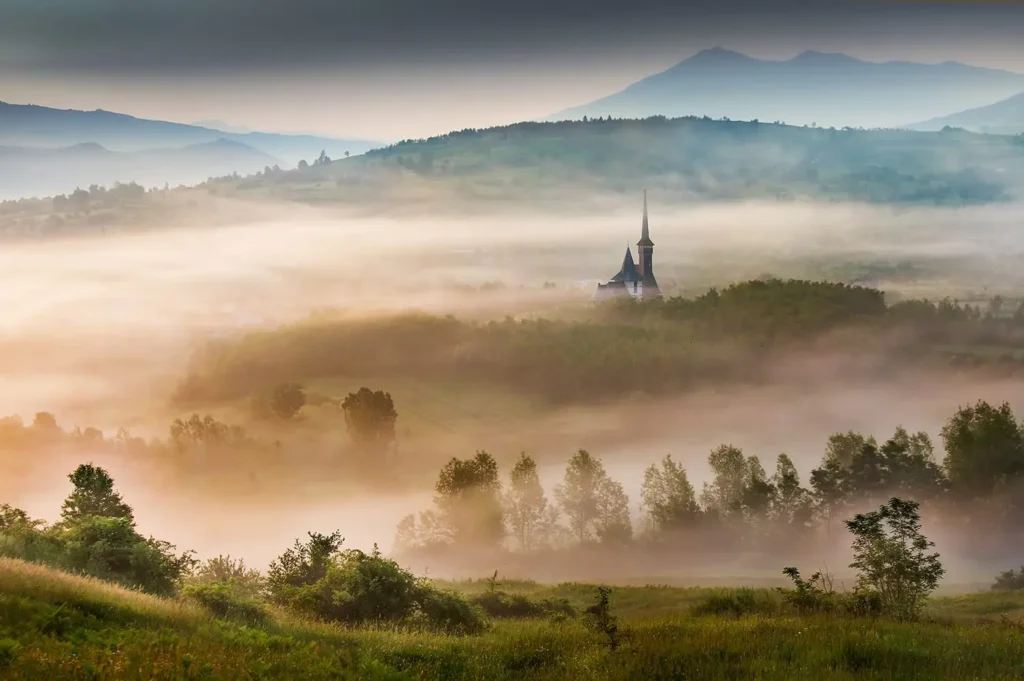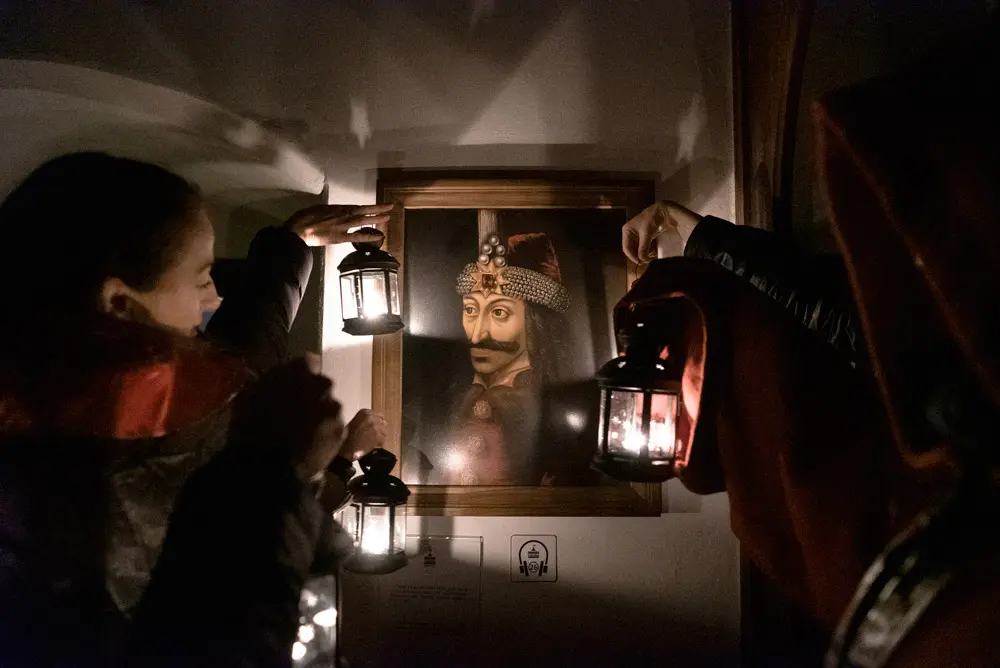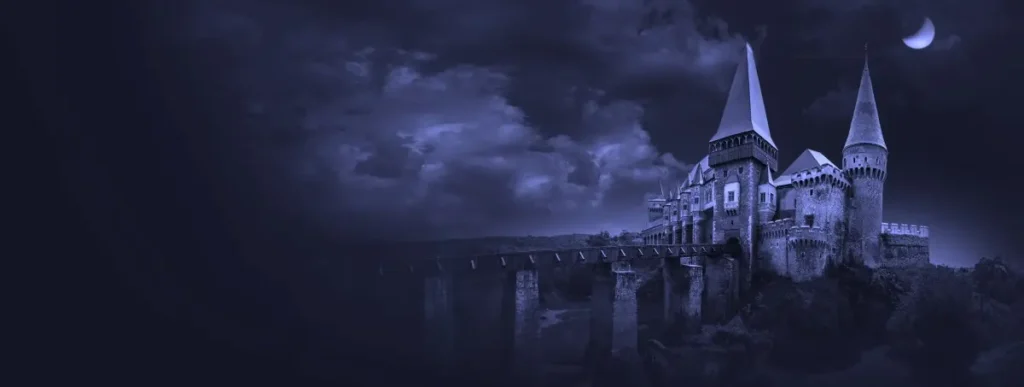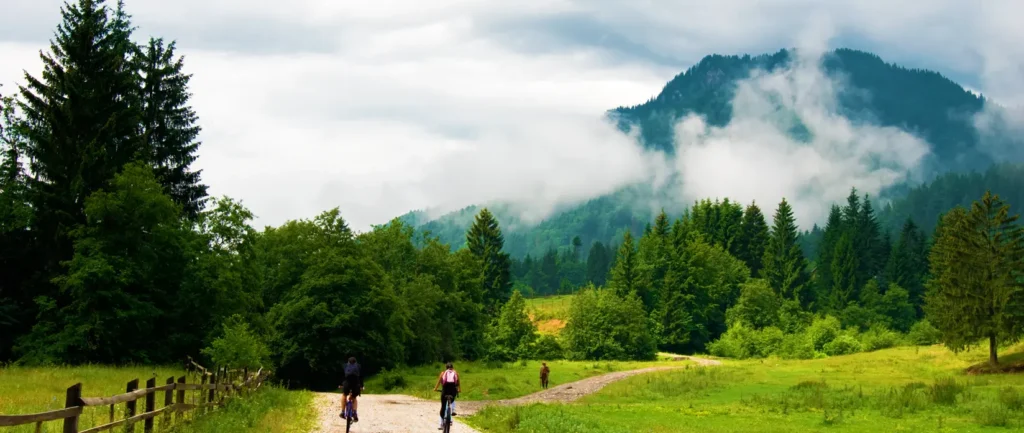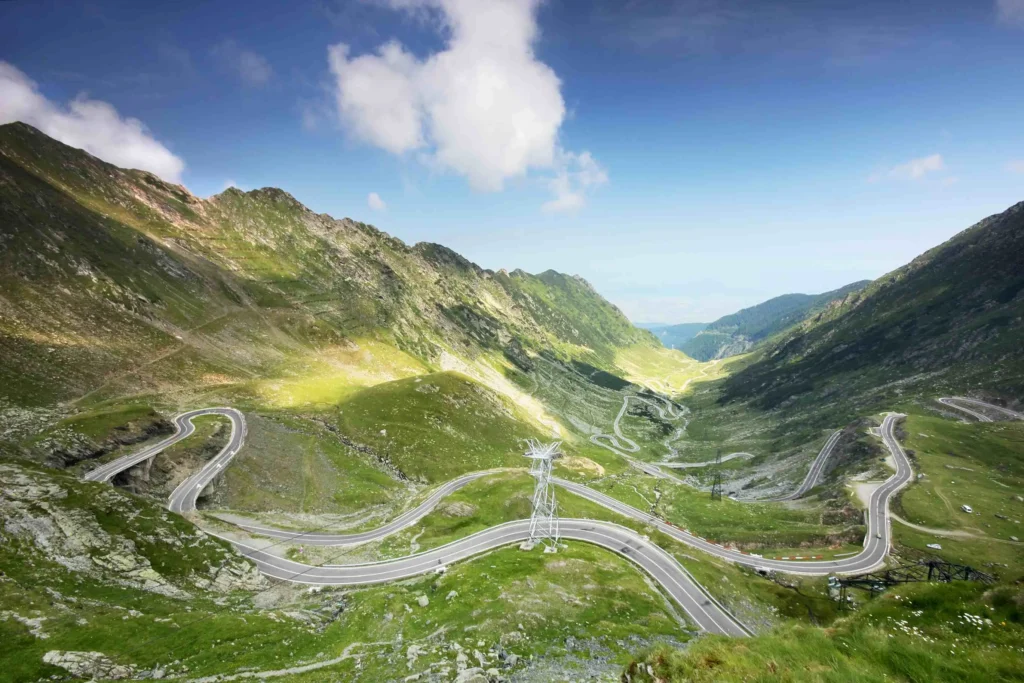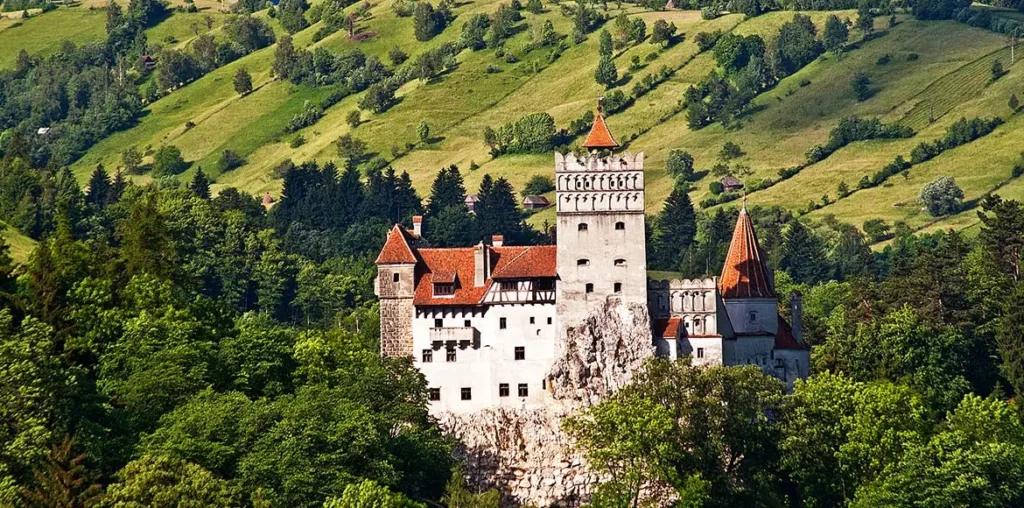Chapters
History of Romania
Throughout the tapestry of history, certain figures weave tales of terror, fascination, and intrigue that transcend the boundaries of time. One such figure is Vlad Dracula, the notorious ruler of Wallachia and the inspiration behind the timeless horror icon, Count Dracula. Enshrouded in centuries of lore, the legend of Dracula is deeply intertwined with the scenic beauty and cultural richness of Transylvania, Romania. An exploration into this connection uncovers not only the spine-tingling tale of a supposed vampire but also a world teeming with architectural splendours, natural wonders, and vibrant traditions.

Portrait of Vlad the Impaler. Photo source: Wikipedia
Vlad Dracula, also known as Vlad the Impaler, reigned in the 15th century, and his rule was marked by a fierce determination to maintain independence in a tumultuous political landscape. His reputation for severe punishment, specifically impalement, earned him a formidable reputation. However, it’s this stark character and brutal rule that gave birth to rumours, eventually metamorphosing into a tale of a blood-thirsty monster, a tale that managed to capture the imagination of generations across the globe.
Nestled in the heart of Romania, Transylvania is as mesmerizing as the legends it harbours. The homeland of Dracula, this region is adorned with captivating medieval castles and fortresses, most notably Bran Castle. This architectural marvel is often associated with Dracula’s residence, and indeed, it’s easy to imagine the count prowling its chilly stone corridors. However, Vlad’s actual habitation was likely Poenari Castle, a crumbling edifice perched precariously on a cliff overlooking the Arges River. These historical sites offer a tantalizing glimpse into Romania’s past, waiting to be discovered by adventurous travellers.
Beyond the allure of Dracula’s castles, Transylvania is a treasure trove of natural beauty. The Carpathian Mountains, with their jagged peaks and lush valleys, offer stunning vistas for hikers and nature enthusiasts. The ancient, unspoiled forests are home to an array of wildlife, including Europe’s largest population of brown bears. This region is also speckled with picturesque villages like Sighișoara, where vibrant houses sit snug against cobblestone streets, and traditional festivals bring the town to life.

To venture into Transylvania is to journey into the realm of legends, where history and myth intertwine. Every village, castle, and mountain seems to whisper tales of a bygone era, painting a vivid picture of Vlad Dracula’s reign. As you traverse the landscape that inspired Bram Stoker’s famous novel, the tale of Dracula becomes more than a Gothic horror story—it transforms into an invitation to explore a nation steeped in history and bursting with culture.
Castles in Romania, such as Bran and Poenari, stand testament to Vlad’s return to his homeland, acting as silent witnesses to the life and times of the real Dracula, Vlad the Impaler. Jonathan Harker, a character from Stoker’s novel, traverses these same landscapes, the Carpathian mountains, which whisper tales of a bygone era, painting a vivid picture of Vlad Dracula’s reign.
Romania’s history, like its landscape, is rich and varied. From Vlad II Dracul, Vlad’s father and member of the Order of the Dragon, to Vlad himself, whose cruelty during his reign left an indelible mark on history. This extends to sons Vlad had and the portrait of Vlad that history paints.
But why the name of Dracula?
Few tales capture the imagination as the chilling legend of Count Dracula. His story, penned by Irish novelist Bram Stoker, is deeply rooted in the soil of Transylvania, a land cloaked in mystery and steeped in rich folklore. Yet, many wonder: why Dracula? Why Transylvania? The answer lies within the fabric of Romanian history, where fact intertwines with fiction, producing a tale as fascinating as the vampire count himself.

https://pt.wikipedia.org/wiki/Transilvânia
Vlad III, or Vlad the Impaler, ruled Wallachia in the 15th century and was renowned for his resistance against the encroaching Ottoman Empire. His reputation for cruelty and his preferred method of execution, impalement, quickly spread throughout Europe. But where does the name Dracula fit into this narrative? Vlad III was the son of Vlad Dracul, translated as ‘Vlad the Dragon,’ an appellation he received after joining the Order of the Dragon. ‘Dracula,’ thus, signifies ‘Son of the Dragon.’ Over time, in modern Romania, ‘drac’ evolved to mean ‘devil,’ amplifying Vlad III’s fearsome reputation.

One of the most chilling tales of Vlad’s reign surrounds the Ottoman Invasion of Wallachia in 1462. As the formidable Ottoman army advanced, Vlad implemented a scorched earth policy, devastating his lands to hinder their progress. The high point of this horrific saga unfolded in Târgoviște, where the invading forces discovered a grotesque display of twenty thousand impaled bodies, a gruesome sight that reportedly dismayed even the hardened Sultan Mehmed II.

The night attack at Târgoviște. Painting by Theodor Aman.
While Vlad’s reputation was well-established in Romanian history, it wasn’t until the publication of Bram Stoker’s Dracula that the first connection between Vlad Dracula and vampirism was established. The infamous Count Dracula was born, a figure bearing the name of Vlad Dracula, but inspired by the violent tales of Attila the Hun.
The backdrop of this haunting tale, Dracula’s castle, has its own tale to tell. While many assume Bran Castle to be the iconic home of the count, Stoker was likely inspired by various sources. Some argue for Poenari Castle, Vlad’s actual stronghold, while others point to New Slains Castle in Scotland. Regardless of its origin, Bran Castle has been marketed extensively as the ‘real’ Dracula’s Castle, forever etching the image of Transylvania as the birthplace of vampires into the global consciousness.
Bram Stoker’s Dracula, while a work of fiction, has become an emblem of Romanian folklore, placing Transylvania firmly on the world map.
While vampires may not lurk in Transylvania’s shadows, the legend of Dracula offers an intriguing lens through which to explore the region’s rich history and cultural heritage. The true appeal of Transylvania and Romania as a whole lies in its enchanting landscapes, its vibrant traditions, and its complex history, waiting to be discovered by those with an adventurous spirit.
Is Dracula Romanian or Hungarian?
It’s important to clarify that we’re discussing Vlad III, also known as Vlad the Impaler, who is often conflated with the character Count Dracula from Bram Stoker’s novel.

https://ro.wikipedia.org/wiki/Bram_Stoker#/media/Fișier:Bram_Stoker_1906.jpg
Vlad III was a ruler in the 15th century of Wallachia, a historical and geographical region of Romania. He is infamous for his brutal rule and his predilection for impalement as a method of execution. His father, Vlad II, was inducted into the Order of the Dragon, a chivalric order by the Holy Roman Emperor, and was hence known as Vlad Dracul, or Vlad the Dragon. As such, Vlad III was often referred to as Dracula, meaning “son of the dragon”.
That being said, it is important to mention that Transylvania, the region often associated with the Dracula myth, has a complex history and was once a part of the Kingdom of Hungary. However, in the time of Vlad III’s reign, Transylvania was largely autonomous, though it had strong political connections to both the Kingdom of Hungary and the Kingdom of Poland.
The character of Count Dracula in Bram Stoker’s novel, while named after Vlad III, is a fictional character. Stoker’s character is described as being from Transylvania, and Stoker himself wrote that Dracula is a Székely – a group within the Hungarian population that lived in Transylvania
The historical figure Vlad the Impaler (often associated with Dracula) was Romanian, ruling over the region of Wallachia. The fictional Count Dracula, while named after Vlad III, is described in the novel as being of Székely (thus, of Hungarian lineage) origin from Transylvania. It’s important to note that both these references are heavily bound to Transylvania, a region that is part of modern-day Romania.

In the realm of popular culture, figures like Béla Lugosi have brought the fictional character of Count Dracula to life on the silver screen, fueling the fascination with the Dracula legend. It’s worth noting that while Dracula Vlad and the fictional Dracula share the name Dracula, the connection between the two is the work of Stoker’s imagination.
Where is dracula’s castle in Romania?
The castle most associated with the Dracula legend is Bran Castle, located near Bran and in the immediate vicinity of Brașov, in Transylvania, Romania. This castle is marketed to tourists as the home of Bram Stoker’s Dracula. Despite the fact that the novel doesn’t specify this castle as Dracula’s residence, it fits the description provided by Stoker, with its dramatic hilltop location and gothic architecture.
It’s worth mentioning that Bran Castle has no direct link to Vlad the Impaler, the historical figure often associated with Dracula. Vlad III never owned Bran Castle, and there’s no solid historical evidence to suggest he even visited it.

The castle with a more direct connection to Vlad III is Poenari Castle, sometimes referred to as the real Dracula’s Castle. This fortress, which is now in ruins, is located high in the mountains over the Argeș River, more precisely on a cliff, on the Transfăgărășan road on the way to Curtea de Argeș. It was used by Vlad III as one of his main fortresses.
Are there vampires in Romania?
From a factual, scientific standpoint, there are no vampires in Romania – or anywhere else in the world. The concept of vampires, as undead beings that sustain themselves by drinking the blood of the living, is part of folklore and mythology and has no basis in scientific reality.
However, the belief in such supernatural entities, particularly the Romanian “strigoi,” has been part of Romanian folklore for centuries.
So, while there aren’t actual vampires in Romania, the country has embraced its vampiric folklore as part of its cultural heritage, providing a rich, intriguing experience for fans of the supernatural, gothic, and macabre. In this sense, tourists can indeed “experience” vampires in Romania, albeit in a symbolic and mythological context.
Conclusion
Embrace the mystery of Dracula, the enchantment of Transylvania, and the allure of Romania. Dive into a world where the past meets the present, where myths and legends seamlessly merge with everyday life. Don’t just read about the famous Count Dracula—walk the paths he might have tread, explore the castles he might have inhabited, and immerse yourself in the rich tapestry of history he helped to weave. Discover the unforgettable beauty of Romania, and let your own story unfold in the heart of Dracula’s homeland.
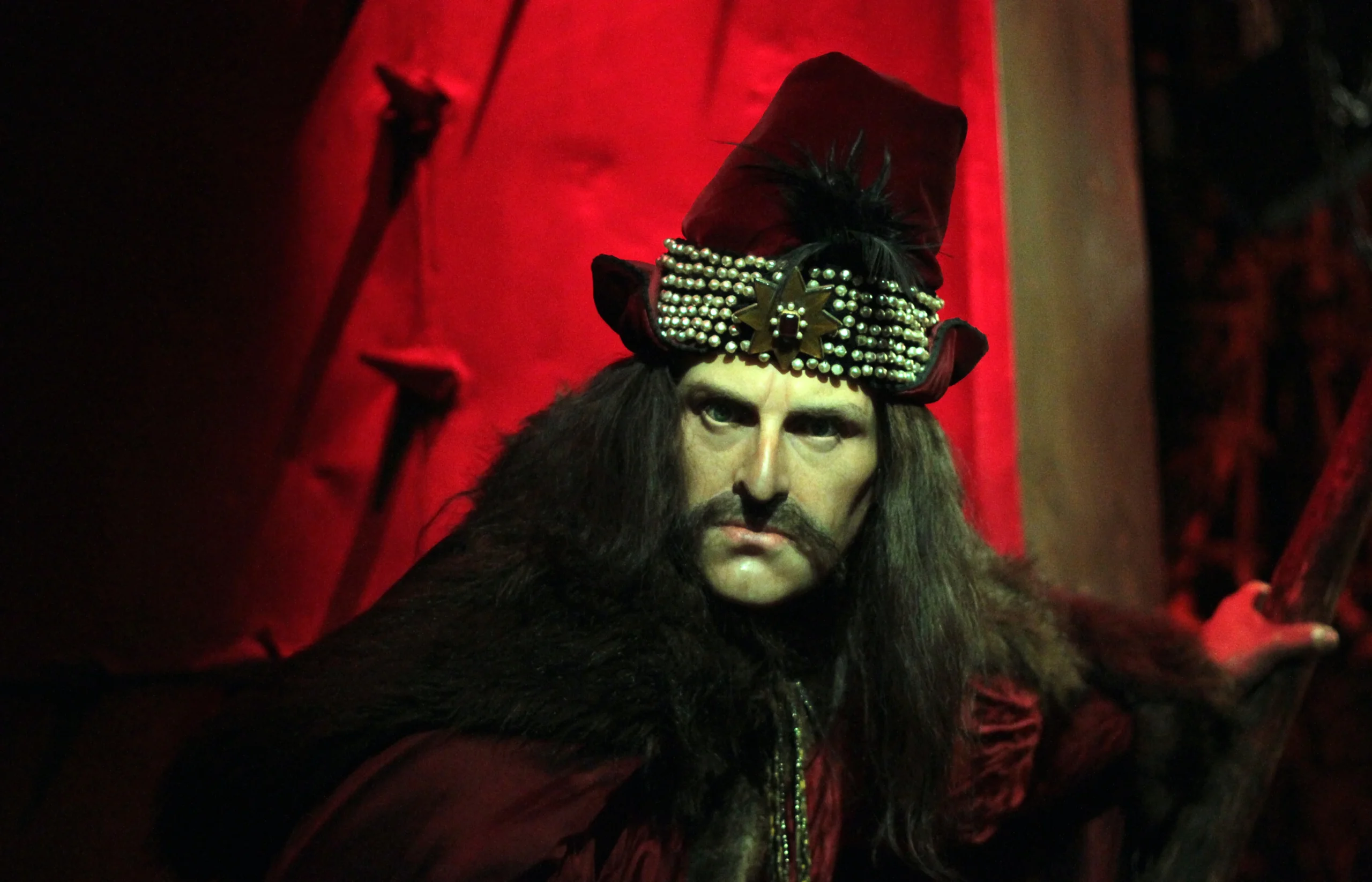
Romania’s charm extends beyond Transylvania. From the Black Sea’s sandy beaches to the Painted Monasteries of Bucovina, from the bustling nightlife of Bucharest to the tranquil beauty of the Danube Delta, there’s something for every kind of traveler in Romania.
Visiting Romania takes you beyond the legend and into the real-world history and culture that inspired it. From the time of Vlad to Vlad’s return and beyond, there is so much to discover in Romania. Whether you’ve visited Romania before or this is your first time, this nation steeped in history and bursting with culture is waiting to be explored.
The novel penned by Bram Stoker, the account of the principalities during time of Vlad, the invasion of Wallachia, all add up to the magnetic lore that attracts millions to Romania. Transylvania’s allure is not just about Dracula, but about a region rich in history and culture.
Visiting Romania and exploring the land that gave birth to the Dracula legend can be a captivating journey. Whether it’s understanding the history of Dracula or exploring the castles in Romania or even simply experiencing the country’s rich cultural heritage, you will find that there’s much more to this country than meets the eye.
So, venture out, and embark on a journey to explore the historical and cultural richness of Romania, the homeland of the real Dracula Vlad. The fascinating history, the stunning natural beauty, the vibrant traditions, and yes, the enduring allure of the Dracula prince all contribute to making Romania a destination worth exploring. The legend of Dracula is but a part of the story; come and discover the rest.

